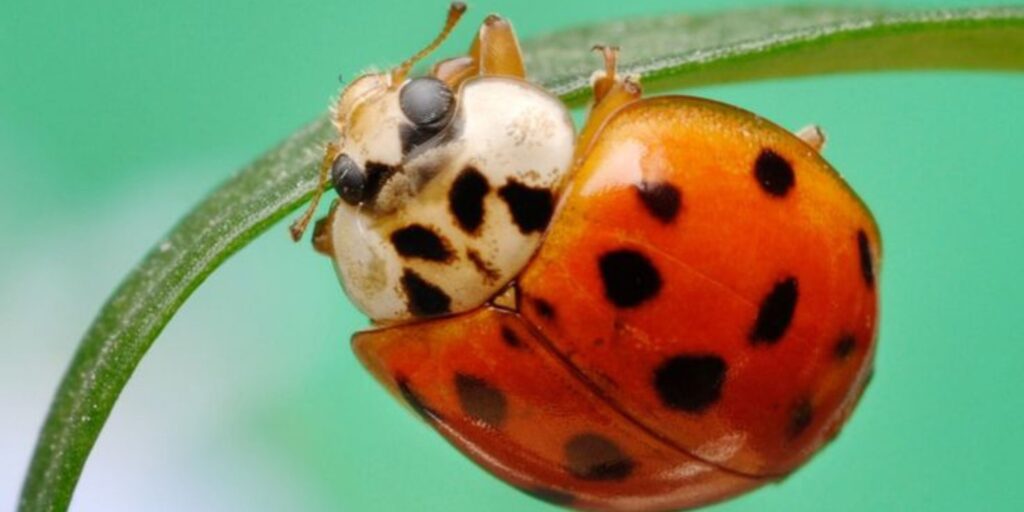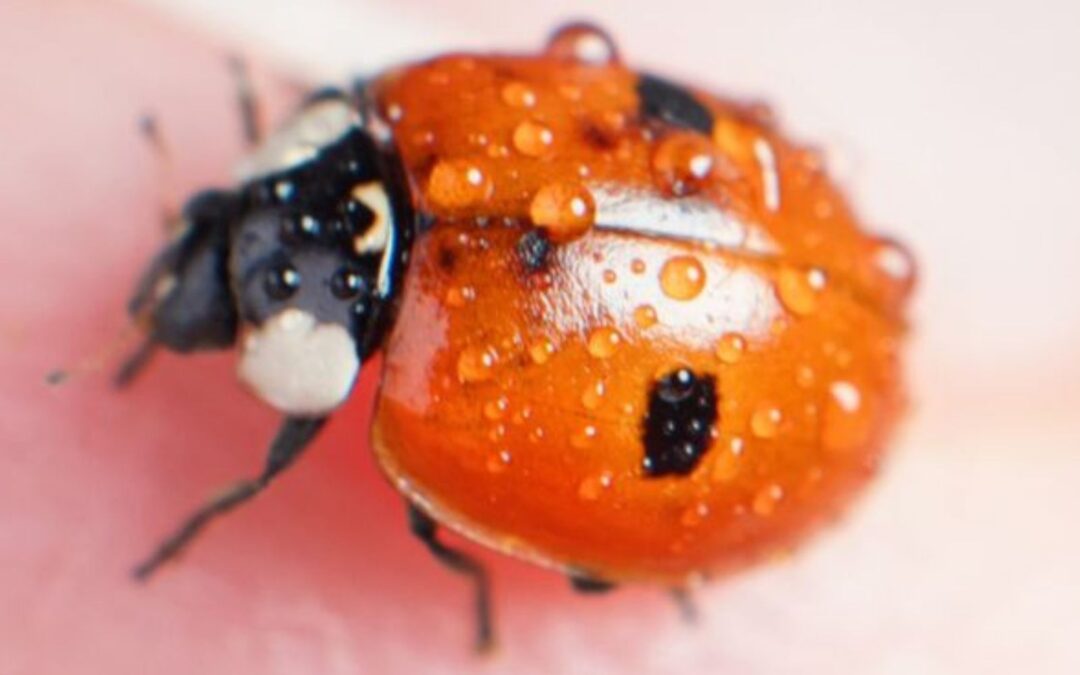Beetles are everywhere, from gardens to homes. They come in various shapes and sizes, each with its unique charm. But amidst their colorful presence, a question looms: do beetles bite? These tiny creatures might seem harmless, but some species have surprising behaviors worth exploring. Let’s dive into the world of beetles and uncover the truth about their biting habits!
Do Beetles Bite? Unveiling the Truth Behind These Tiny Creatures
Many wonder if beetles bite, and the answer is yes—some can. However, most beetles are not aggressive and will only bite in self-defense or when provoked. Their bites usually cause minor irritation.
While some species possess strong jaws for chewing through wood or plants, they rarely target humans. Understanding their behavior can help alleviate fears about these fascinating insects and their occasional biting tendencies.
Do Beetles Bite: What are Beetles?

Beetles are fascinating insects belonging to the order Coleoptera. With over 350,000 species worldwide, they represent one of nature’s most diverse groups.
These tiny creatures come in various shapes and sizes, showcasing unique colors and patterns. Their hard outer shell, elytra, protects their delicate wings and bodies while allowing them to thrive in many environments.
Do Beetles Bite: Beetle Facts
Beetles are fascinating creatures, with over 350,000 species identified worldwide. They belong to the order Coleoptera, making them one of the largest groups in the animal kingdom. Their hard outer shell protects their bodies and helps them thrive in diverse environments.
These insects can be found on every continent except Antarctica. Some beetles can live for several years, while others have shorter lifespans depending on their species and habitat.
Do Beetles Bite: Beetle Life Cycle
The beetle life cycle consists of four stages: egg, larva, pupa, and adult. After mating, females lay eggs in various environments suitable for their young.
Once the eggs hatch, larvae emerge and begin feeding. This stage is crucial for growth as they prepare for the next transformation into pupae. Eventually, they metamorphose into adults, ready to continue the cycle.
Do Beetles Bite: Beetle Defense Mechanisms
Beetles have evolved fascinating defense mechanisms to survive in a world full of predators. Many species possess hard exoskeletons, protecting from physical threats. Others can release noxious chemicals or sprays that deter attackers.
Some beetles even mimic the appearance of more dangerous insects, tricking potential predators into thinking twice before approaching. These adaptive strategies showcase their resilience and ingenuity in nature’s competitive landscape.
What Do Beetles Look Like?
Beetles showcase a stunning variety of shapes and colors. Their hard outer shells, called elytra, can be glossy or matte, often adorned with intricate patterns.
Size varies greatly; some are tiny, while others boast impressive lengths. Most have six legs and antennae that help them navigate their environments effectively. These features make beetles both fascinating and unique among insects.
Do Beetles Bite: Types of Beetles
Beetles are a diverse group, boasting over 350,000 species worldwide. They come in various shapes and sizes, from the vibrant ladybug to the intimidating stag beetle. Each type has its unique traits and habitats.
Some common types include weevils, carpet beetles, and fireflies. These fascinating insects play essential roles in ecosystems as decomposers or pollinators while showcasing nature’s incredible diversity.
Do Beetles Bite: Where Do Beetles Live?
Beetles are incredibly adaptable creatures found in diverse habitats worldwide. They thrive in forests, grasslands, deserts, and even urban areas. Their ability to live almost anywhere makes them one of the most successful groups of insects.
Many beetles prefer moist environments like decaying wood or leaf litter. Others inhabit gardens and agricultural fields, playing vital roles in ecosystems as decomposers and pollinators.
What do Beetles Eat?
Depending on their species, beetles have diverse diets. Some are herbivores, munching on leaves, flowers, and fruits. Others are scavengers that feed on decaying organic matter or even wood.
Predatory beetles feast on other insects, which is crucial in pest control. Their variety ensures they thrive in different environments, making them adaptable and resilient creatures.
Signs You Have Beetles

Finding beetles in your home can be unsettling. Look for small holes in wooden furniture or flooring, which may signal an infestation.
Additionally, you might notice shed skins or tiny dark droppings around infested areas. If you see any of these signs, it’s time to investigate further and take action against unwanted beetle guests.
Why Do You Get Beetles?
Beetles often invade homes, searching for food, shelter, or moisture. They thrive in areas with plenty of organic matter, such as wood, fabric, and stored food.
Poor sanitation can attract these pests. Leaving crumbs around or neglecting to clean up spills creates an inviting environment for beetles to settle in and multiply. Regular cleaning helps prevent infestations before they start.
Health Risk of Beetles
Beetles are generally not harmful to humans. Most species cannot bite or sting, making them a low-risk presence. However, some beetle larvae can damage crops and stored products, leading to economic concerns.
Additionally, certain types of beetles may trigger allergies in sensitive individuals. Their droppings or shed skins can contribute to respiratory issues, especially indoors.
Are Beetles Dangerous?
Most beetles are harmless to humans and pets. They may be more of a nuisance than a danger, often scurrying away when approached.
However, some species can cause damage to homes and crops. Their larvae might feast on wood or textiles, leading to structural issues or ruined fabrics if left unchecked. Understanding their habits is key to managing any potential risks effectively.
Some Beetles are Good
Not all beetles are pests; some play a vital role in our ecosystems. Ladybugs, for instance, feast on aphids, helping protect gardens and crops from damage.
Additionally, certain beetles contribute to decomposition. They break down organic matter like dead plants and animals, enriching the soil. These beneficial beetles also support biodiversity and promote healthier environments for other species.
How to Get Rid of Beetles
To get rid of beetles, start by identifying the species. This helps you choose the right method for elimination. Vacuuming can remove visible pests and their eggs from carpets or furniture.
Next, consider natural repellents like diatomaceous earth or essential oils such as peppermint. Seal cracks and crevices in your home to prevent future infestations. Regular cleaning also effectively deters these tiny invaders.
Can beetles bite?
Yes, beetles can bite, but most species pose little threat to humans. Their bites are typically a defense mechanism used when they feel threatened.
While some may cause minor discomfort or irritation, most beetles prefer to avoid confrontation altogether. It’s important to remember that not all beetle encounters result in bites; many are harmless and scurry away when disturbed.
What types of beetles bite humans?
Certain beetles can bite humans, though it’s rare. Stag beetles are known for their strong jaws and may pinch if threatened. Their bites can be painful but are usually harmless.
Carpet beetles and red-legged ham beetles have also been reported to bite, but they typically do so when provoked. These encounters often result in minor irritation rather than serious harm.
Do beetles bite humans?
Beetles are generally harmless to humans, but some species can bite. However, most beetle bites occur only when they feel threatened or provoked. The pain from these bites varies depending on the type of beetle.
For example, stag beetles have powerful jaws but typically do not pose a serious threat. Other species, like carpet beetles, might irritate if they bite, but it’s rare.
Stag Beetle Bites vs. Other Beetle Bites
Stag beetles are known for their impressive mandibles, which can look intimidating. However, their bites are rarely harmful to humans. Most often, they cause minor discomfort rather than severe injuries.
In contrast, many other beetle species pose little threat. While some may bite defensively when handled, the pain is usually brief and not serious. Understanding these differences can ease concerns about encounters with various beetles.
Stag Beetle Prevention
To prevent stag beetles from invading your space, maintain a clean environment. Regularly remove debris and decaying wood where they might breed.
Seal cracks and gaps in doors and windows to reduce entry points. Keeping outdoor lights dim can also deter them, as these insects are attracted to bright areas at night.
Carpet Beetles
Carpet beetles are small pests that can wreak havoc in your home. They thrive on natural fibers, often munching through carpets, clothing, and upholstery. These tiny creatures are typically round or oval-shaped with a range of colors.
The larvae are particularly destructive, seeking protein sources in animal-based materials. If left unchecked, carpet beetles can cause significant damage to belongings.
Red-legged Ham Beetle
The Red-legged Ham Beetle is a small, reddish-brown insect often found in homes and food storage areas. These beetles are notorious for infesting cured meats, especially hams, leaving behind unsightly holes.
Their larvae thrive in protein-rich foods and can quickly become a nuisance if not addressed. Identifying them early can help prevent significant damage to your pantry stock.
How to Identify Anobiid Powderpost Beetles
Anobiid powderpost beetles are small, typically brown or black insects. They measure around 1/8 to 1/4 inch long and have elongated bodies with a distinctive oval shape. Look for their tiny round exit holes in wood surfaces.
To identify them further, check for fine powdery frass near the holes. This is a sign of their feeding habits as they tunnel through wood, causing potential damage over time.
How To Identify & Get Rid of Powderpost Beetles
Powderpost beetles are identified by their small size and elongated bodies, often ranging from 1/8 to 3/4 of an inch. Look for fine, powdery frass around infested wood and tiny exit holes on surfaces.
To eliminate them, treat affected wood with insecticides or heat. Consider replacing severely damaged materials and sealing entry points to prevent future infestations. Regular inspections can help catch these pests early.
How to Identify Bostrichid Powderpost Beetles
Bostrichid powderpost beetles are small, usually less than half an inch long. Their elongated bodies can appear dark brown to black. Look for their distinct cylindrical shape and finely textured elytra.
A telltale sign is the presence of tiny exit holes in wood surfaces. These indicate where adult beetles have emerged after infesting the timber, often causing significant damage over time.
Asian Longhorned Beetle Life Cycle
The Asian Longhorned Beetle undergoes a fascinating life cycle. It begins as an egg in tree bark, where the larvae hatch and burrow into the wood. This stage lasts several months, allowing them to feed on the host tree.
As they grow, larvae transform into pupae within their tunnels. Eventually, adult beetles emerge by boring through the bark to enter their next phase of life.
Life Cycle of Carpet Beetles
Carpet beetles undergo a fascinating life cycle. They begin as eggs in hidden areas like carpets or clothing. After about two weeks, the larvae emerge and feed on organic materials.
These larvae can cause damage while they grow and mature. Eventually, they pupate before transforming into adult beetles. Depending on environmental conditions, this process can take several months to complete.
Carpet Beetle Infestation

Carpet beetle infestations can be quite a nuisance. These tiny pests are known for their destructive feeding habits, targeting natural fibers in carpets, clothes, and upholstery.
Once inside your home, carpet beetles reproduce quickly. Adults lay eggs that hatch into larvae, which cause damage as they feed. Signs of an infestation include small holes in fabrics and shed skins.
Regular cleaning is essential to combat these invaders. Vacuuming carpets and washing textiles can help eliminate larvae and adults alike. If you suspect a severe infestation, consider consulting pest control professionals for effective removal strategies.

